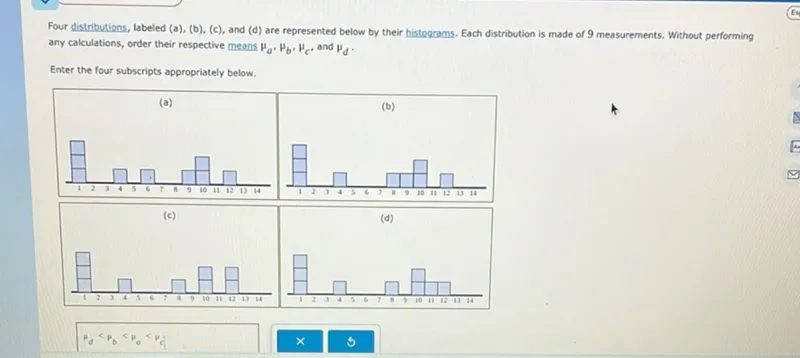Questions: Four distributions, labeled (a), (b), (c), and (d) are represented below by their histograms. Each distribution is made of 9 measurements. Without performing any calculations, order their respective means μa, μb, μc, and μd. Enter the four subscripts appropriately below.

Transcript text: Four distributions, labeled (a), (b), (c), and (d) are represented below by their histograms. Each distribution is made of 9 measurements. Without performing any calculations, order their respective means $\mu_{a}, \mu_{b}, \mu_{c}$, and $\mu_{d}$. Enter the four subscripts appropriately below.





